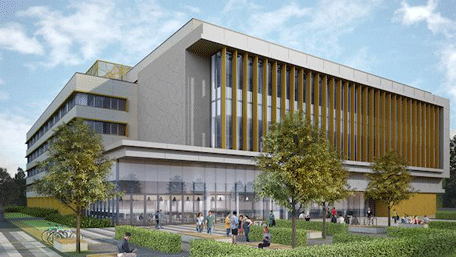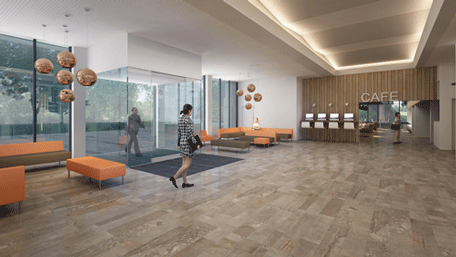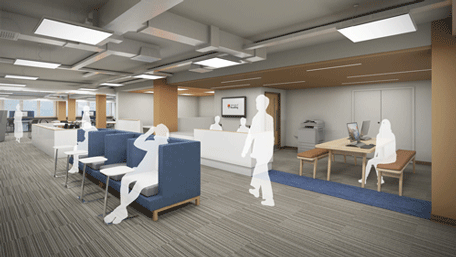Next phase for Reading underway
A £40 million redevelopment and refurbishment of the University of Reading Library begins this summer, due for completion in 2019.
20 Jun 2016

The Library building at Whiteknights opened in 1964 and was extended in 1985. This major redevelopment comes after the first £4.4m phase revamped the study spaces and furniture on the 2nd to 5th Floors in 2013 and 2014.

More space and better use of space
The next phase of the project will increase space for individual and group study, and will make better use of the space currently available on the Ground and 1st Floors. The redevelopment will provide better access and security across the building as well as improving its energy efficiency, as a result of improved insulation and ventilation. New lifts will be installed, and an improved service for borrowing and returning books will be put into place.
The exterior of the building will be totally re-clad and will have replacement windows fitted throughout, providing a striking focal point at the heart of the Whiteknights campus.

Significant improvements
- Study seating capacity increased by 200.
- Installation of 3 new 16-person lifts serving all floors, plus a new book lift.
- Toilet capacity increased with toilets available on all floors, including disabled and gender neutral provision.
- Significant improvements to wheelchair accessibility.
- A new clearly-defined entrance, with improved security, in the central location of the façade leading on to redefined landscaped frontage.
- Introduction of improved automated services for borrowing and returning books.
- External cladding and new windows to improve building sustainability and energy saving.
- Upgrades to all roof finishes and thermal insulation.
- Removal of backlog maintenance.
- Expansion of the café spaces, including opening glazed doors onto external al fresco areas.
- Reduction in Library energy use of around 40%, with carbon emissions reduced by 30% through efficiency improvements gained with the replacement of mechanical services and improved thermal insulation.
Images courtesy architects Stride Treglown and the University of Reading.